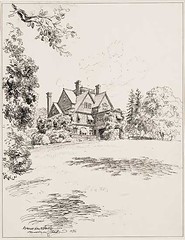Famous nineteenth century American artist, Thomas Cole (February 1, 1801 - February 11, 1848) was born in Lancashire, England. His family moved to the United States in 1918, where Cole received his basic training in art from Stein, a portrait artist. However, Cole was not successful as a portrait artist and his focus shifted towards 'Landscape Art.' He is considered as the founder of the Hudson River School, a mid-nineteenth century American art movement. 'Naturalism' and 'Romanticism' were the two major themes that characterized Cole's works, portraying American landscape quite realistically. The human forms in his paintings were always of secondary importance in comparison to the landscape around. He had the ability to paint landscapes with very fine detailing and he was also skilled in making dramatic paintings with a lot of imagination and bold light effects. Although Cole was mainly a landscape painter, he also made allegorical works. One of his most popular creations in the latter category is the "The Course of Empire," a five part series, created during 1833-36, and 'the Voyage of Life,' a four part series.
The significance of Thomas' "The Course of Empire" lies partly in the fact that it was a representation of the sentiments and the emotions of Americans at that point in time. At this time, pastoral was considered the ultimate factor for human civilization to flourish and there were the fears of the possible decay of the empire. The series includes "The Savage State," "The Arcadian or Pastoral State," "The Consummation," "Destruction," and "Desolation." This series of paintings reflects an imaginary city's rise and fall and portrays the growth of a society from savage conditions to the peak of luxury, ending in destruction.
The city is shown located in a river valley close to its intersection with the sea. A unique landmark, present in all five of the paintings in the series, is a huge rock perched dangerously over a cliff overlooking the river valley. "The Savage State" reflects Native American hunter wearing animal skin on a stormy day. "The Arcadian or Pastoral State" lands on a clear summer/spring day, with an organized landscape typical of pre-urban Ancient Greece. "The Consummation of Empire" shows a noon of summers. Depicting the Ancient Rome, both the banks for the river carry marble structures of architectural finesse. "The Destruction of Empire" depicts the Vandal sack of Rome of 455. The canvass is full of destruction at all level, architectural to humane. "Desolation" is a scene after a year of destruction, leaving the land with its some ruins, reminding of the glorious past. The very stunning "The Course of Empire" is now a part of the collection at the New York Historical Society and remains one of the best pieces of artwork by Thomas Cole.









